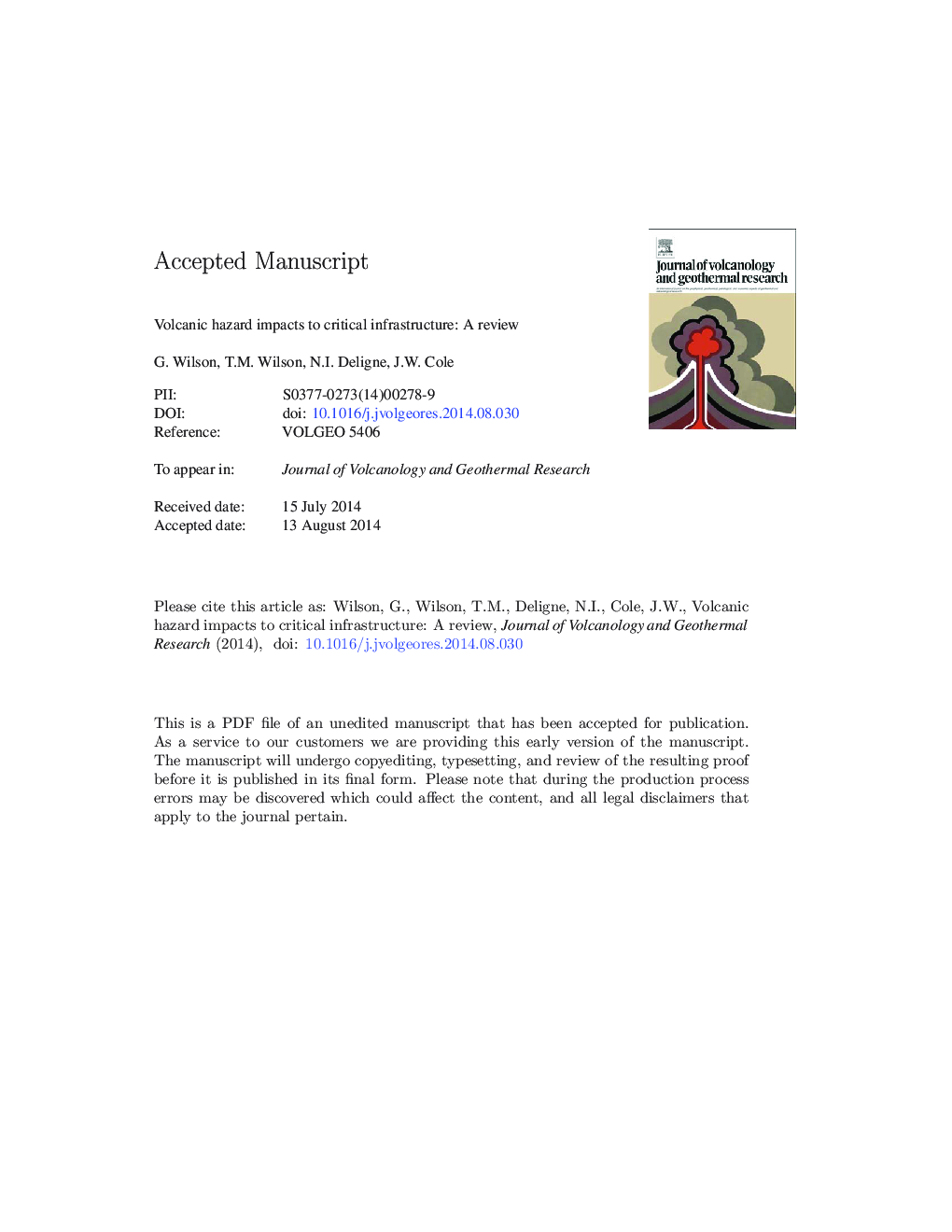| Article ID | Journal | Published Year | Pages | File Type |
|---|---|---|---|---|
| 6439664 | Journal of Volcanology and Geothermal Research | 2014 | 85 Pages |
Abstract
Effective natural hazard risk assessment requires the characterisation of both hazards and vulnerabilities of exposed elements. Volcanic hazard assessment is at an advanced state and is a considerable focus of volcanic scientific inquiry, whereas comprehensive vulnerability assessment is lacking. Cataloguing and analysing volcanic impacts provide insight on likely societal and physical vulnerabilities during future eruptions. This paper reviews documented disruption and physical damage of critical infrastructure elements resulting from four volcanic hazards (tephra fall, pyroclastic density currents, lava flows and lahars) of eruptions in the last 100Â years. We define critical infrastructure as including energy sector infrastructure, water supply and wastewater networks, transportation routes, communications, and critical components. Common trends of impacts and vulnerabilities are summarised, which can be used to assess and reduce volcanic risk for future eruptions. In general, tephra falls cause disruption to these infrastructure sectors, reducing their functionality, whilst flow hazards (pyroclastic density currents, lava flows and lahars) are more destructive causing considerable permanent damage. Volcanic risk assessment should include quantification of vulnerabilities and we challenge the volcanology community to address this through the implementation of a standardised vulnerability assessment methodology and the development and use of fragility functions, as has been successfully implemented in other natural hazard fields.
Related Topics
Physical Sciences and Engineering
Earth and Planetary Sciences
Geochemistry and Petrology
Authors
G. Wilson, T.M. Wilson, N.I. Deligne, J.W. Cole,
